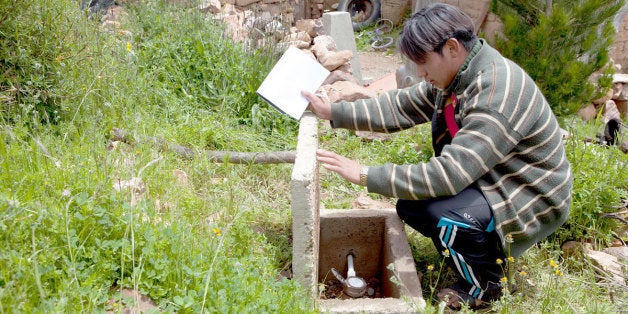
Most of us have probably never questioned that clean water will come out the faucet when we want it. In the United States, homeowners and renters pay the monthly water bill without giving it a second thought.
It turns out that one simple tool that most take for granted can actually be the key to helping others in developing nations with their water crisis: a meter.
In many regions around the world, it's a challenge to convince people of the benefits of installing meters as part of a holistic approach to providing sustainable water coverage. This is especially true in Latin America, where a history of privatization of water services left a bad taste in people's mouths, leading to violent conflicts over water and a lingering mistrust of organizations in the sector, corporate and otherwise. And of course, there's the inherent struggle that comes with changing the way people have lived for hundreds of years, even if they acknowledge there's a problem.
But by working closely with community advocates, volunteers, government officials and entrepreneurs, all who see an opportunity for change for good, Water For People is able to make a connection with entire districts and guide them through the process of installing meters and other key components to a sustainable water system. Once installed, communities are quickly seeing the deep impact of this little low-tech piece of equipment, which usually costs around $50. Here's why:
(1) Conservation
Water For People has found that just the act of installing water systems and meters makes people turn off their water and dramatically cuts down on waste. In Honduras and other Latin American countries, community members acknowledge that previous dry summers led to poor water management, and families living farther from water tanks and other sources received far less than their counterparts with immediate access to water, increasing the likelihood of crop damage, the potential for illness and their children missing school.
Now, the combination of 24-hour access, an easy way to track water within individual households, and the ability to pinpoint leaks in infrastructure has changed things significantly. Everyone who needs water gets it, and gets the amount they need. Those who use more pay more. Which brings us to ...
(2) Equity
Water metering works via pay-per-consumption, creating a fair and data-driven financial model that caters to households' individual needs. So now a family that has more people and more crops will pay more for their usage than a family of two with little to no land.
A great success story comes out of Condor Q'hochi in Bolivia: 31 families in the community were sharing groundwater from a electric pump system installed in 2007, but unequal water distribution meant some families could go without water for days because of overuse by other households. Dona Cinda, the president of the water committee, decided to take action and advocated for meter installation while convincing residents and the government to co-finance the project. Now everyone gets and pays for their fair share, and it's even allowed for more people to connect to the water system because they have a better idea of how much water is available to serve the area.
(3) Community Investment
The pay-per-use model and accompanying tariff system has also created a larger sense of community ownership in water services. You probably don't know any friends in the U.S. who serve on a local water committee, but these volunteer-based groups are an extremely important piece of ensuring sustainable water operations in developing countries.
The people who serve on a district or community water committee help to educate households about how meters work and how usage fees are collected, and they act as advocates for and with local governments, entrepreneurs, and aid organizations. Quite often, these people are the ones who convince entire communities to move forward with installing new water system technology and help to calm concerns about political motivations and corporatization of services.
As part of our vision to provide water coverage for all households, clinics, and schools, one of Water For People's roles is a mentor or consultant -- although we support training, education, and distribution networks, communities are responsible for paying for all materials and usage fees they may incur. Therefore, because metering is such a key component to a sustainable system, we only support water systems that include them.
As with many technologies today, it's amazing to see how something so small can change our world in such a big way. And with water meters, it's a reminder that even something labeled as "low-tech" has far-reaching impact on the way entire regions work and live - this tool to measure water volume and usage is affecting everything from how people do their daily chores and creating new jobs and opportunities, to building a stronger sense of community and providing a foundation for economic growth.
To learn more about Water For People's work with water meters, visit WaterForPeople.org.
Cisco helped Water for People develop Field Level Operations Watch, which uses smart phone and web-based technology to monitor water investments and collect and analyze data, increasing the water sector's effectiveness, accountability, and transparency. For more information about Cisco and it's focus on critical human needs, please visit: http://csr.cisco.com/pages/critical-human-needs